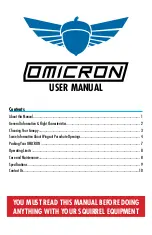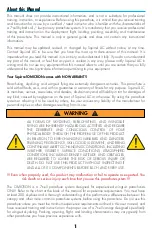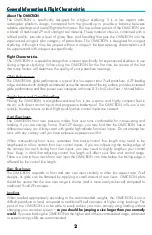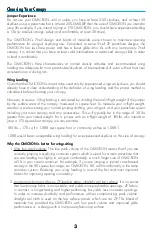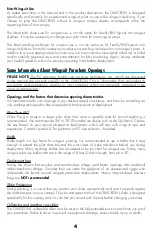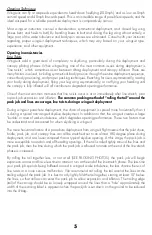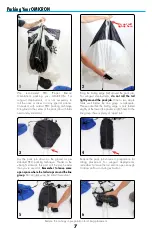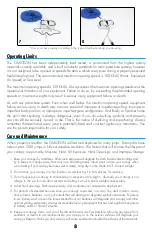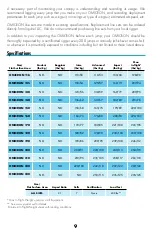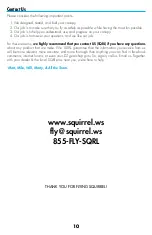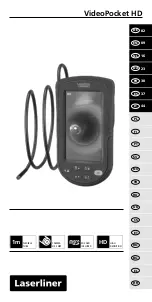
3
Choosing Your Canopy
Jumper Experience
Do not use your OMICRON until or unless you have at least 200 skydives, and at least 50
skydives using a parachute that is at least 20% SMALLER than the size of OMICRON you intend to
jump (for example, if you intend to jump a 170 OMICRON, you should have experience landing
a 136 (or smaller) canopy, safely and comfortably, at least 50 times).
The OMICRON’s 7-cell design and blend of materials were chosen to maximize opening
performance for wingsuit skydiving use. Compared to some 9-cell ZP parachute designs, the
OMICRON has less flare power and has a lower glide ratio. As with any low-porosity 7-cell
canopy, it is critical that you have at least solid intermediate or advanced canopy skills in order
to land it comfortably.
The OMICRON’s flare characteristics at normal density altitudes and recommended wing
loading are adequate for most parachutists/skydivers of intermediate skill, even without front riser
acceleration or a diving turn.
Wing Loading
Given that the OMICRON is meant to be used only by experienced wingsuit skydivers, you should
already have a clear understanding of the definition of wing loading and the proper method to
calculate it before choosing your canopy.
However, to review: Wing loading is calculated by dividing the total in-flight weight of the jumper
by the surface area of the canopy, measured in square feet. To measure your in-flight weight,
stand on a scale wearing your normal jumping clothing, your wingsuit, and your parachute system
including your main canopy, and any accessories. This will typically be in the range of 30 lbs
greater than your naked weight. For a jumper with an in-flight weight of 185lbs who intends to
jump a 170 square foot canopy, we can estimate:
185 lbs ÷ 170 sq ft = 1.088 per square foot, or commonly written as 1.088:1
1.088 would be an acceptable wing loading for an experienced skydiver on this size of canopy.
Why the OMICRON is better for wingsuiting
1. Ultra low pack volume: The low pack volume of the OMICRON means that if you are
currently jumping a skydiving container system which is sized for a main parachute that
you are loading too highly to wingsuit comfortably, a much larger size of OMICRON
will fit in your current container. For example, if you are jumping a typical cross-braced
canopy in the 90 square foot range, an OMICRON 130 will fit comfortably in the same
container system.
Reducing your wing loading is one of the first and most important
factors for improving opening consistency
.
2. Low-porosity bottom surfaces, ZP leading edge, ultralight sail top surface: It is no secret
that low-porosity fabric is more stable, and yields more predictable openings. ZP fabric,
in contrast, is longer-lasting and higher-performing but yields less consistent openings.
In order to increase durability and performance without compromising pack volume,
ultralight sail cloth is used on the top surface panels which are not ZP. This blend of
materials has provided the OMICRON with low pack volume and improved glide
performance vs. a design with a low-porosity fabric top surface.

